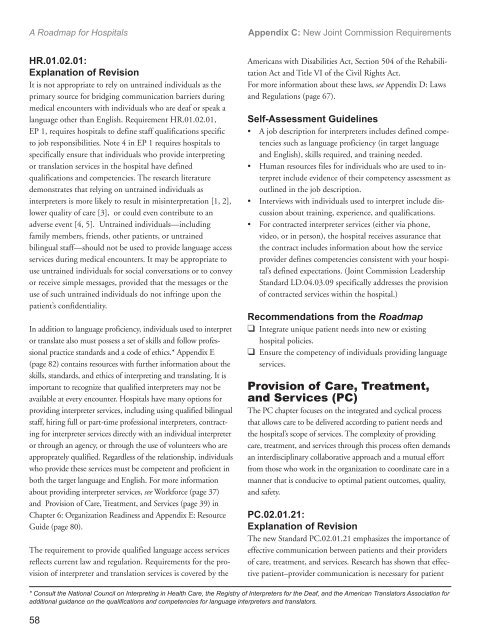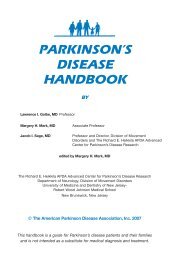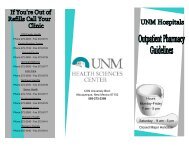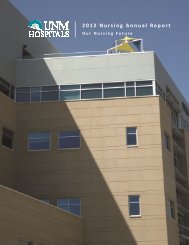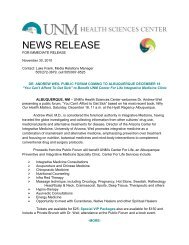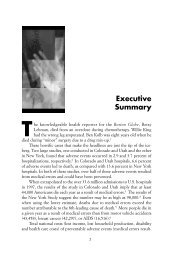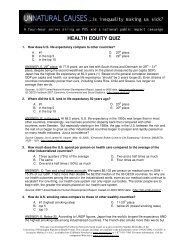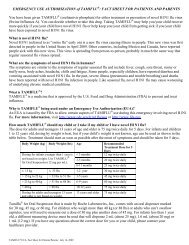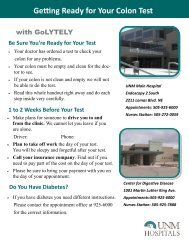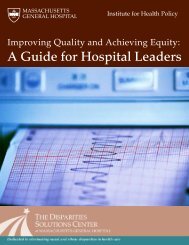Advanced Effective Communication, Cultural Competence, and ...
Advanced Effective Communication, Cultural Competence, and ...
Advanced Effective Communication, Cultural Competence, and ...
Create successful ePaper yourself
Turn your PDF publications into a flip-book with our unique Google optimized e-Paper software.
A Roadmap for Hospitals<br />
Appendix C: New Joint Commission Requirements<br />
HR.01.02.01:<br />
Explanation of Revision<br />
It is not appropriate to rely on untrained individuals as the<br />
primary source for bridging communication barriers during<br />
medical encounters with individuals who are deaf or speak a<br />
language other than English. Requirement HR.01.02.01,<br />
EP 1, requires hospitals to define staff qualifications specific<br />
to job responsibilities. Note 4 in EP 1 requires hospitals to<br />
specifically ensure that individuals who provide interpreting<br />
or translation services in the hospital have defined<br />
qualifications <strong>and</strong> competencies. The research literature<br />
demonstrates that relying on untrained individuals as<br />
interpreters is more likely to result in misinterpretation [1, 2],<br />
lower quality of care [3], or could even contribute to an<br />
adverse event [4, 5]. Untrained individuals—including<br />
family members, friends, other patients, or untrained<br />
bilingual staff—should not be used to provide language access<br />
services during medical encounters. It may be appropriate to<br />
use untrained individuals for social conversations or to convey<br />
or receive simple messages, provided that the messages or the<br />
use of such untrained individuals do not infringe upon the<br />
patient’s confidentiality.<br />
In addition to language proficiency, individuals used to interpret<br />
or translate also must possess a set of skills <strong>and</strong> follow professional<br />
practice st<strong>and</strong>ards <strong>and</strong> a code of ethics.* Appendix E<br />
(page 82) contains resources with further information about the<br />
skills, st<strong>and</strong>ards, <strong>and</strong> ethics of interpreting <strong>and</strong> translating. It is<br />
important to recognize that qualified interpreters may not be<br />
available at every encounter. Hospitals have many options for<br />
providing interpreter services, including using qualified bilingual<br />
staff, hiring full or part-time professional interpreters, contracting<br />
for interpreter services directly with an individual interpreter<br />
or through an agency, or through the use of volunteers who are<br />
approprately qualified. Regardless of the relationship, individuals<br />
who provide these services must be competent <strong>and</strong> proficient in<br />
both the target language <strong>and</strong> English. For more information<br />
about providing interpreter services, see Workforce (page 37)<br />
<strong>and</strong> Provision of Care, Treatment, <strong>and</strong> Services (page 39) in<br />
Chapter 6: Organization Readiness <strong>and</strong> Appendix E: Resource<br />
Guide (page 80).<br />
The requirement to provide qualified language access services<br />
reflects current law <strong>and</strong> regulation. Requirements for the provision<br />
of interpreter <strong>and</strong> translation services is covered by the<br />
Americans with Disabilities Act, Section 504 of the Rehabilitation<br />
Act <strong>and</strong> Title VI of the Civil Rights Act.<br />
For more information about these laws, see Appendix D: Laws<br />
<strong>and</strong> Regulations (page 67).<br />
Self-Assessment Guidelines<br />
• A job description for interpreters includes defined competencies<br />
such as language proficiency (in target language<br />
<strong>and</strong> English), skills required, <strong>and</strong> training needed.<br />
• Human resources files for individuals who are used to interpret<br />
include evidence of their competency assessment as<br />
outlined in the job description.<br />
• Interviews with individuals used to interpret include discussion<br />
about training, experience, <strong>and</strong> qualifications.<br />
• For contracted interpreter services (either via phone,<br />
video, or in person), the hospital receives assurance that<br />
the contract includes information about how the service<br />
provider defines competencies consistent with your hospital’s<br />
defined expectations. (Joint Commission Leadership<br />
St<strong>and</strong>ard LD.04.03.09 specifically addresses the provision<br />
of contracted services within the hospital.)<br />
Recommendations from the Roadmap<br />
❑ Integrate unique patient needs into new or existing<br />
hospital policies.<br />
❑ Ensure the competency of individuals providing language<br />
services.<br />
Provision of Care, Treatment,<br />
<strong>and</strong> Services (PC)<br />
The PC chapter focuses on the integrated <strong>and</strong> cyclical process<br />
that allows care to be delivered according to patient needs <strong>and</strong><br />
the hospital’s scope of services. The complexity of providing<br />
care, treatment, <strong>and</strong> services through this process often dem<strong>and</strong>s<br />
an interdisciplinary collaborative approach <strong>and</strong> a mutual effort<br />
from those who work in the organization to coordinate care in a<br />
manner that is conducive to optimal patient outcomes, quality,<br />
<strong>and</strong> safety.<br />
PC.02.01.21:<br />
Explanation of Revision<br />
The new St<strong>and</strong>ard PC.02.01.21 emphasizes the importance of<br />
effective communication between patients <strong>and</strong> their providers<br />
of care, treatment, <strong>and</strong> services. Research has shown that effective<br />
patient–provider communication is necessary for patient<br />
* Consult the National Council on Interpreting in Health Care, the Registry of Interpreters for the Deaf, <strong>and</strong> the American Translators Association for<br />
additional guidance on the qualifications <strong>and</strong> competencies for language interpreters <strong>and</strong> translators.<br />
58


